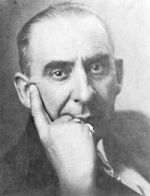Thus, according to Johns Hopkins University at Baltimore, one of the best American universities, statistics show a lower mortality wherever medication has been supplanted by rigid hygienic and dietetic measures. Meanwhile the laboratories multiply; researches, of which numerous publications are the fruit, grow, but all aim rather at producing new remedies, than demonstrating the danger of such medication habitually employed. No one seeks through research to synthesize a guiding law in the art of healing. Has such a definite law, such a compass on our uncharted sea, never existed in our therapy?.
A priori, one may wonder or conjecture but that is not the attitude of the man of science. To see it, that is his duty!.
But this unhoped for law the homoeopathic physicians think they possess – the homoeopathic doctrine pretends to disclose it. Should the fact that this doctrine is considered by the best European scientists as empirical prevent our testing it by the criterion of experience and reason? A paucity of partisans of any given doctrine does not a priori, weaken its conclusions. Among its supporters there may be such as give proof of their ignorance, their lack, not merely of scientific spirit, but of professional probity itself.
Even this is not a valid argument against the theory, which is an entity in itself, independent of individuals. Any doctrine, be it what it may, is always worthy of attention and criticism, though this may be given merely from the viewpoint of the history of the sciences. Finally,, if there be reality here, it is urgently necessary to study this system with the most profound care, for it would indicate the dawn of a new era in medicine.
The art of therapy would be transformed into a science!.
It is the resolution of precisely this problem, which has forced us to undertake a voyage of discovery and study to this new world. Seven years of investigation of the facts yielding these conclusions, have led to the work presented in this thesis, written to fulfil the requirement for the doctorate of medicine, and refused

